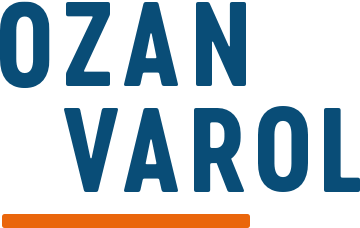I believe we need more wacky ideas in this world.
I believe that until we push beyond the boundaries of what’s “practical,” we can’t discover the self-manufactured constraints that are holding us back.
I believe that there’s tremendous value to engaging in fantasy even where—or particularly where—real life conditions are wildly out of sync with our unconstrained imaginations.
I believe that we must suspend the possible to discover the seemingly impossible.
Often, we take things in the reverse order. We begin with what’s possible given what we have—the job we can get with our skillset, the project we can pursue with our budget. This means we bring all of our biases, illusory boundaries, and unsupported assumptions into the conversation. These stop the conversation before it begins, so the status quo sticks.
There’s often no reason to innovate unless you begin with the fantasy first. Once we have our wacky ideas on the table, we can collide them with reality and see what happens. The result is often nothing short of magic.
Here’s a recent example.
The traffic in Los Angeles is notoriously bad. Depending on the time of day, you might sit for hours in traffic seriously contemplating whether the rest of your life will be spent on the 405 freeway.
If you’re a typical city planner tasked with unclogging LA’s arteries, the questions are obvious. How do we encourage people to use bikes or public transportation? How we do build more roads? How do we create a carpool lane to decrease rush-hour traffic?
But these questions won’t solve the problem. At most, they’ll yield incremental improvement. Examine them closely, and you’ll find a lack of first-principles thinking. They’re all operating with an implied assumption: Traffic is a two-dimensional problem that requires a two-dimensional solution.
Instead of remaining within two dimensions, Elon Musk’s The Boring Company (yes, that’s a real company) posed a thought experiment: What if we considered a third dimension and went above the ground or under? In practice, this means either flying cars or driving through underground tunnels.
If you’ve seen the movie Back to the Future as many times as I have, flying cars would seem to be the obvious futuristic choice (Roads? Where we’re going, we don’t need roads!). But as glamorous as they sound, flying cars aren’t viable: They generate a lot of noise, their performance can be hampered by weather conditions, and they can induce anxiety among the earthbound pedestrians about potential malfunctions that can produce a collision between car and human head.
In contrast, underground tunnels are weatherproof and invisible to pedestrians above the surface. If you build them at sufficient depth, their construction and operation don’t generate any noise discernible from the surface. What’s more, with an underground tunnel, you can drive from Westwood to LAX in less than six minutes.1
But here’s the problem: It’s extremely expensive to dig tunnels—to the tune of $1 billion per mile. This constraint alone makes the project financially prohibitive.
To make underground tunnels affordable, the cost for building one has to be reduced tenfold. This is no easy feat, but The Boring Company has a few ideas. The first comes from another pie-in-the-sky fantasy: What if we put cars on electric skates? Currently, a one-lane tunnel must be 28 feet to accommodate cars that have a tendency to swerve when operated by error-prone humans. The stability provided by an electric skate would allow the diameter of the tunnel to be cut in half. Electric skates would also have the added benefit of allowing cars to travel at 125-150 miles per hour—with zero emissions to boot. This step alone would cut down the cost of a tunnel by a factor of three to four.
The second idea is to increase the efficiency of the tunnel boring machines. These machines are currently fourteen times slower than a snail—in large part because tunneling technology hasn’t improved for the past fifty years. The Boring Company has several ideas for defeating the snail: increase the power output of the machines, continuously tunnel (instead of tunnelling 50% of the time and building support structures during the other 50%), and eliminate human operators by automating the machines. The Company also plans to recycle the excavated dirt in order to build the necessary tunnel structures—which would save money and cut down on concrete use, reducing environmental impact.
Aside from the financial constraint, the underground tunnel project also faces a practical one: In attempting to decrease congestion on the roadways, underground tunnels can exacerbate congestion at points of entry and exit. But there’s a solution to this problem as well: Create numerous points of entry as small as the size of a single parking space, equipped with metal pods taking cars down to the tunnels for quick merging into underground traffic.
Here’s a cool video that shows how all of this would work.
Last week, the company convinced the City of Chicago to award it a contract to build an 18-mile tunnel between the O’Hare airport and downtown Chicago.
Time will tell whether the Boring Company will win its daring dash against the snail. The project is fraught with numerous engineering challenges and potential complications resulting from treacherous geological conditions.
But here’s the thing: It doesn’t have to work.
Even if the project fails spectacularly, it’s virtually guaranteed to take what was boring and make it exciting, to produce improvements in an industry that has stagnated for decades—all because someone dared to raise their hand, set aside the possible, and ask “Why not?”
1https://www.ted.com/talks/elon_musk_the_future_we_re_building_and_boring


